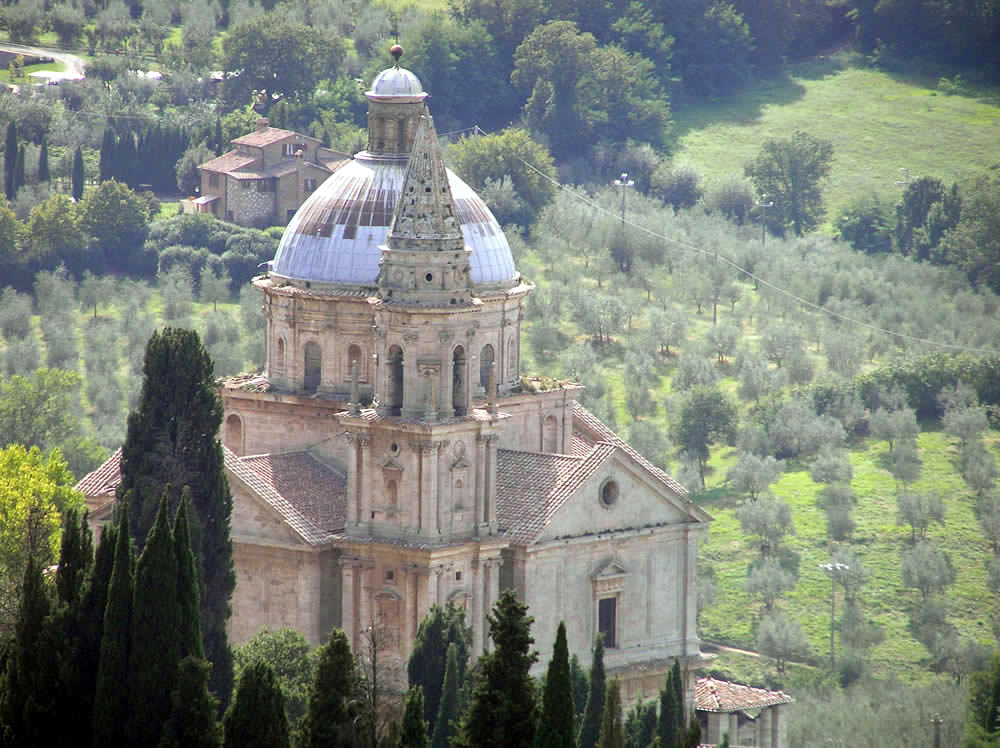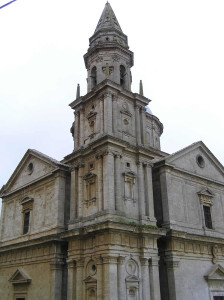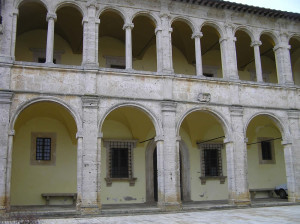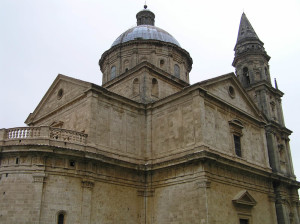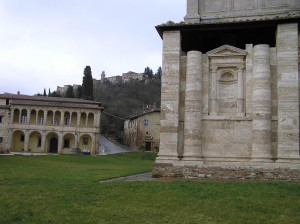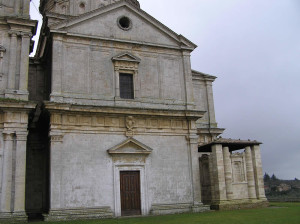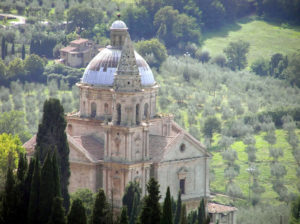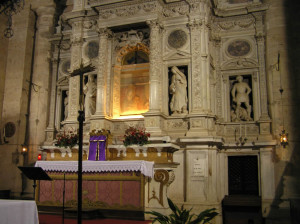Questo articolo è disponibile anche in:
![]() Français
Français ![]() Deutsch
Deutsch ![]() Español
Español ![]() Italiano
Italiano
The Church or the Sanctuary of the Madonna di San Biagio is located at the foot of the hill of Montepulciano, in the bottom of a driveway lined with cypress trees. This church was built by Antonio da Sangallo the Elder between 1518 and 1545 and is a masterpiece of the sixteenth century.
The origin of the church of San Biagio is linked to a miraculous event which took place on April 23, 1518, when two women and a shepherd, passing in front of a fresco depicting the Madonna and Child in her lap and St. Francis, they saw that the eyes of the Virgin moved like if she was alive.
THE MASTERPIECE OF ANTONIO DA SANGALLO THE OLD
The church of the Madonna di San Biagio, has a Greek cross plan with a central dome and a semicircular apse. Renaissance masterpiece, the church is flanked by two towers and it’s made of travertine. The bell towers are situated next to the church in the spaces of the arms of the cross. The Baroque interior is painted, has a beautiful main altar with marble dossal with four statues of saints made in 1584 by Ottaviano Lazzerini, above the altar is a stained glass window with Madonna and Saints by Michelangelo da Cortona.
In front of the church is the harmonious building of the Canonica, with two beautiful arcades, also designed by Sangallo, it was built after his death, in 1595. In front of the Canonica is a well also designed by Sangallo.
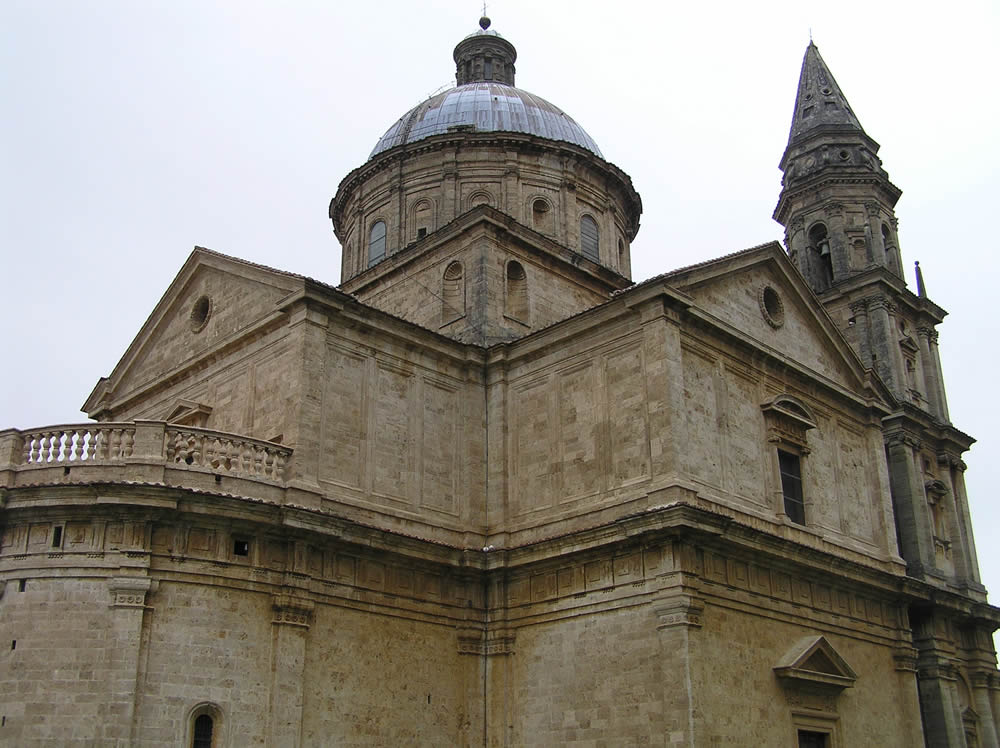
BIBLIOGRAPHY
- AA. VV. “Toscana” Guide Rosse Touring Club Italiano, 2007
- AA. VV. “Montepulciano perla del Cinquecento” 2011, C&P Adver Effigi
- Mangiavacchi Agostino “La chiesa cattedrale di Montepulciano. Le altre chiese della città” 2009, Tozzuolo
- Singleton Kate, cur. Ruffa G. “Montalcino e Montepulciano. Val d’Orcia e dintorni” 2001, Slow Food
- AA. VV. “Montepulciano e Montefollonico” 2012, KMZero
- cur. Società storica poliziana “Montepulciano città nobile di Toscana” 2006, Le Balze
- AA. VV. “Montepulciano. Guida storico artistica” 2004, Le Balze
- cur. Barcucci. P. “Montepulciano. Guida storico artistica” 2011, C&P Adver Effigi
Questo articolo è disponibile anche in:
![]() Français
Français ![]() Deutsch
Deutsch ![]() Español
Español ![]() Italiano
Italiano

